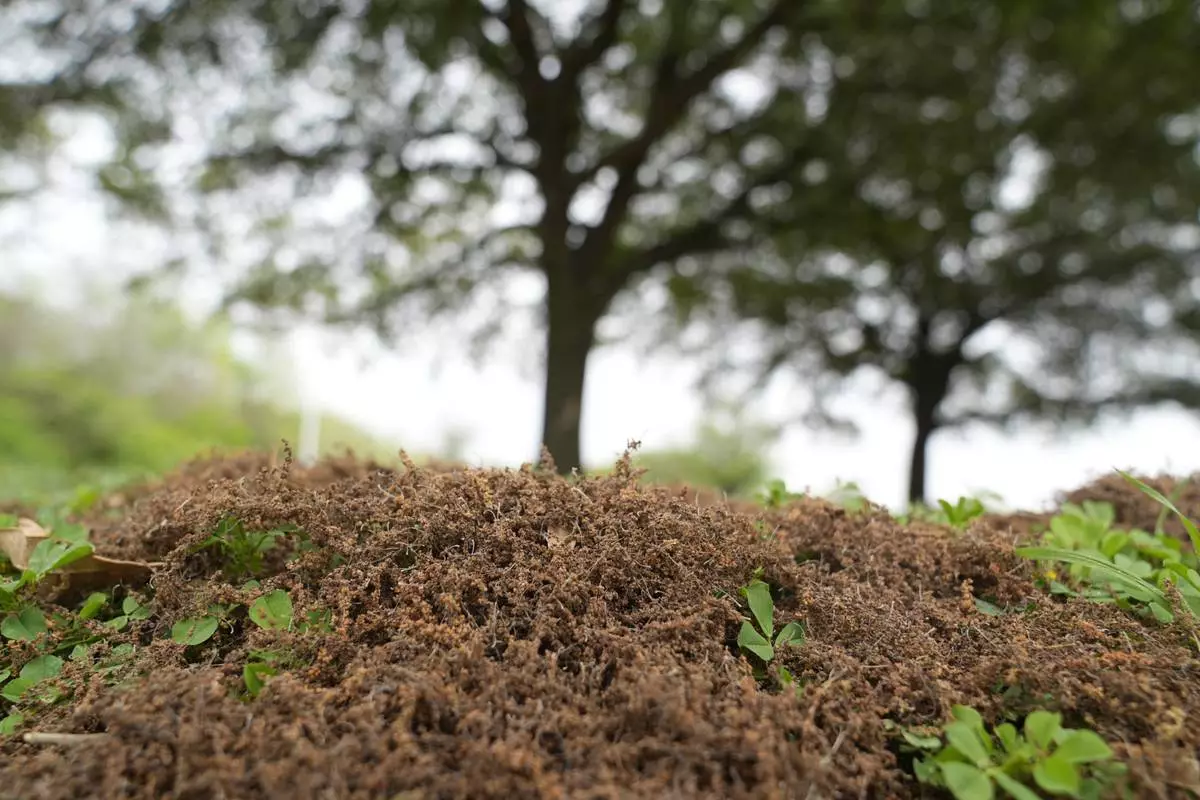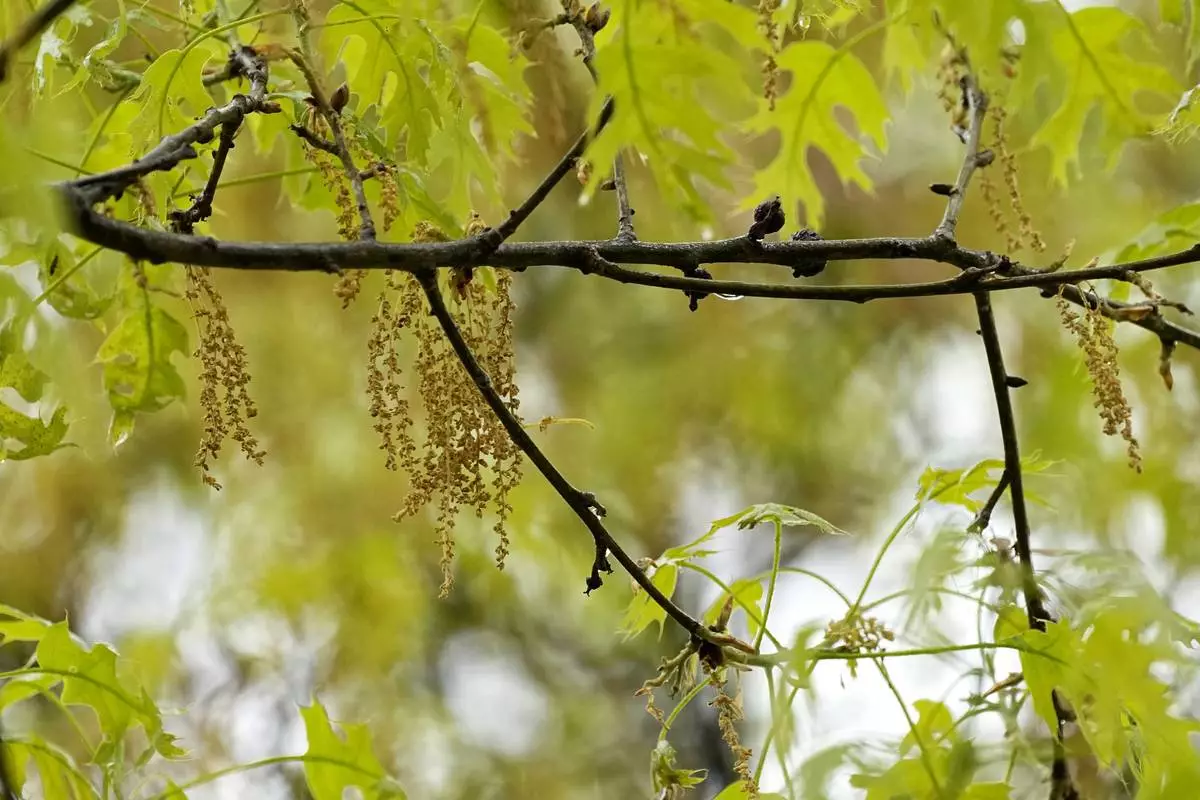Myanmar's army was not the only group that slaughtered civilians in the country's volatile west last year, Amnesty International said in a new report accusing ethnic Rohingya insurgents of massacring dozens of Hindus during an escalation of a long-running communal conflict in Rakhine state.
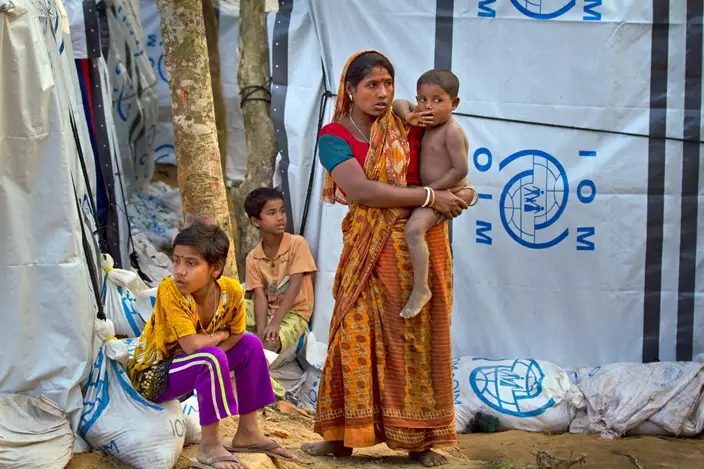
FILE - In this Jan. 16, 2018, file photo, a Hindu refugee stands outside her makeshift shelter with her children, near Kutupalong refugee camp near Cox’s Bazaar, Bangladesh. (AP Photo/Manish Swarup, File)
The London-based rights organization said it had investigated the widely reported killing of dozens of minority Hindus on Aug. 25 in a village called Ah Nauk Kha Maung Sei and concluded Rohingya militants were responsible.
Claims that the Arakan Rohingya Salvation Army, or ARSA, had carried out a massacre there were first made by the government and security forces just hours after it occurred. It was the same day Rohingya militants attacked 30 police posts and an army base in the volatile region, provoking a bloody army counter-offensive that eventually drove nearly 700,000 Rohingya civilians into Bangladesh.
At the time, Myanmar officials said they had discovered two mass graves containing dozens of bodies, and that around 100 Hindus were missing in all. The story, though, became controversial after survivors who reached Bangladesh gave conflicting testimony to reporters, with some blaming ethnic Rakhine Buddhist locals instead.
Amnesty International said the findings in its report released Wednesday were based on "a careful review of evidence" that included the testimony of dozens of people and imagery analyzed by forensic pathologists.
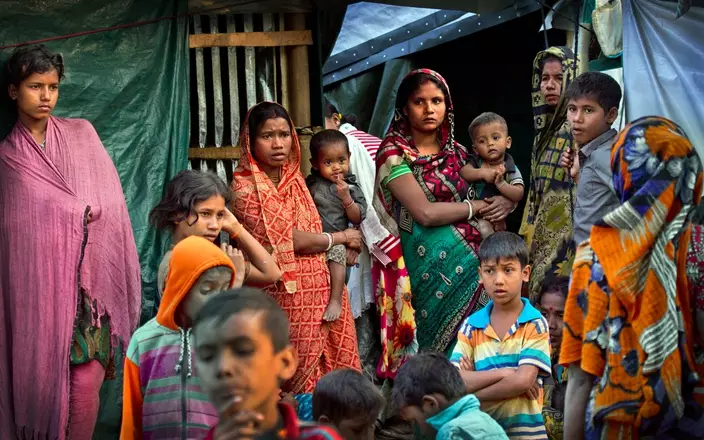
FILE - In this Jan. 16, 2018, file photo, Hindu refugees stand outside their make shift shelters at Kutupalong refugee camp near Cox's bazar, Bangladesh. (AP Photo/Manish Swarup, File)
"Our latest investigation on the ground sheds much-needed light on the largely under-reported human rights abuses by ARSA during northern Rakhine state's unspeakably dark recent history," said Tirana Hassan, the group's crisis response director.
"Accountability for these atrocities is every bit as crucial as it is for the crimes against humanity carried out by Myanmar's security forces," Hassan said.
While nobody knows for sure how many people were killed in Rakhine state since August — the government generally prohibits independent reporting from the area — the vast majority of those who died are believed to be Rohingya killed by security forces. The aid group Doctors Without Borders estimates at least 6,700 Rohingya were killed during the first month alone.
ARSA could not be reached for comment on the Amnesty International report. A once-active Twitter account attributed to the group has not tweeted since January.
In its report, Amnesty International said that Rohingya militants, clad in black and wielding guns and swords, attacked the Hindus in Ah Nauk Kha Maung Seik around 8 a.m. on Aug. 25.
It's unclear why, but some suspect the militants believed the Hindu community sympathized with the predominantly Buddhist government's anti-Rohingya stance.
Amnesty International said the fighters blindfolded their victims and marched them away before executing 53 of them, including men, women and children. When the army launched its ferocious counter-attack, many survivors ended up fleeing into Bangladesh along with the insurgents.
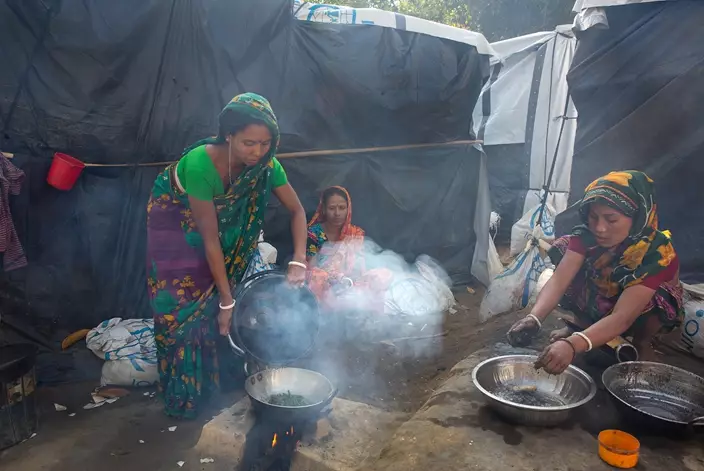
FILE - In this Jan. 19, 2018, file photo, Hindu women refugees prepare supper at their camp near Cox's Bazar, Bangladesh. (AP Photo/Manish Swarup, File)
There, ARSA members threatened witnesses and told them to say Rakhine villagers were responsible, Amnesty International said. After the survivors returned to Myanmar in October, however, they "unambiguously asserted that Rohingya, believed to be ARSA fighters, were responsible."
Amnesty International said the changing testimony was "largely explained by the pressures and threats to personal safety that they faced while in Bangladesh."
The group said it also based its determination on other evidence, including consistent descriptions witnesses gave of the attackers and forensic analysis of 31 photographs of exhumed bodies.
The group said 46 Hindus in the neighboring village of Ye Bauk Kyar disappeared the same day and are believed to have been killed. And on Aug. 26, it said ARSA fighters killed six Hindus in Myo Thu Gyi.
David Mathieson, a former human rights researcher who is now an independent analyst based in Myanmar, said the Amnesty International findings confirm reports of ARSA's brutality.
"That doesn't justify in anyway the government's massive response that drove out nearly 700,000 Rohingya. It doesn't excuse it at all, but it does put another layer of complexity into the violence over the past year," he said.



